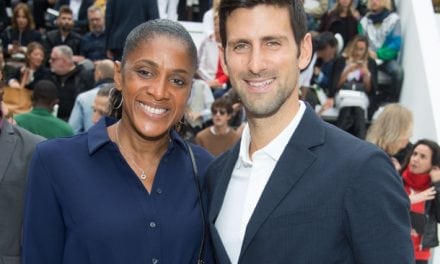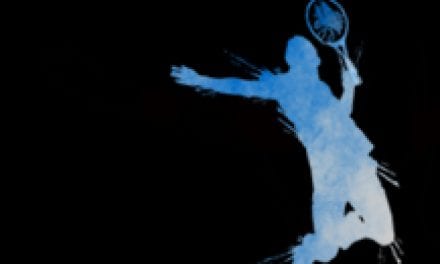The Tower of Tandil is not focused on results just yet as Paris looms.
By: Chris Oddo | @TheFanChild
Juan Martin del Potro has only seven matches under his belt this season, and he’s coming off a serious knee injury that for a spell in 2019 caused him to have to consider yet another season-ending surgery. And yet today the Argentine is back on the tour and he looked more than ready for prime time in Rome, where he won two rounds and then pushed Novak Djokovic to three sets and three hours in an epic quarterfinal.
So where exactly is Del Potro in terms of his best tennis?
Not quite there he says.
“I played great tennis for almost three hours in very high intensity with the No.1 of the world, which is a very good signal looking to the future,” Del Potro told reporters on Saturday at Roland Garros. “But I know how is my present at the moment, I know how far is my best level.”
The Tower of Tandil may say that he’s not quite there in terms of form and fitness, but those who witnessed that hair-raising encounter with Djokovic would surely disagree. He struck has backhand ferociously and kept Djokovic on his back foot for large portions of the match.
It was the old Del Potro, the lion-hearted purveyor of mighty groundstrokes and striker of fear in opponents' hearts.
“I’m getting back to my old backhand and that helped me for my whole game,” he said. “I played a lot of backhands down the line, making a lot of winners [against Djokovic in Rome]. Now I can mix it up with the slices, different shots that improved a few years ago, and if my wrist still helps me I will be playing harder backhands as well as my forehands and I will have a complete game for this year.”
Del Potro knows that it’s early, and he also has the wisdom of years and tears behind him. This is a man that has endured four wrist surgeries and one who last year had his patience rewarded when he reached his second career Grand Slam final and his first since 2009. Del Potro broke the record for most Grand Slam singles appearances between finals last year in New York—he had played 21 majors between his trip to the 2009 U.S. Open final and the 2018 U.S. Open final.
He surely looks primed to reproduce that level and potentially return to that stage of a major sometime soon, but he’s unwilling to compromise what he believes will be a strong second half of the season by rushing his still-not-quite-perfect knee here in Paris.
Today Del Potro spoke of the period after the Delray Beach Open in February and his next appearance on the clay at Madrid in May. After suffering a setback in Florida, many suggested surgery as a potential option for Del Potro but he told this reporter that he knew deep down it wouldn’t be the right move.
He spent another three months away from the tour and today Del Potro feels he benefitted greatly from the decision.
“Of course I had experience with these tough moments of my career and also I had the support from my family and friends and the people who helped me to keep trying and keep going because for the sport it’s the worst part of the show when you get injured and you cannot do what you want,” he said. “I took some experience with my wrist to feel the same things with the knee. I spoke a lot with my doctor and basically after Delray Beach when all the people around me recommended surgery I heard very deep in my heart to try a different way for the last time and then we found Angel Cotorro, the Spanish doctor. He tried a different treatment and it helped me at the moment and now I’m playing without surgery on the knee and I think that is because I had a different experience with my wrist and I took a good decision for the moment.”
As a two-time Roland Garros semi-finalist that is rounding into form, it seems easy to assume that Del Potro is ready for the next step here in Paris. But it's not such a simple equation. The 30-year-old is still very much in trial mode with his knee as he prepares to play his first best-of-five tennis since the rupturing of his right patella occurred last October in Shanghai.
If the knee feels good and the body gives him the proper sensations, he’ll be a force, but if it doesn’t, that’s okay—there’s still plenty of time and now that the knee is responding to treatment the future looks bright.
“I have high expectations in the future but not now because I want to be calm. … I will try to play as best as I can but I am going slowly.”


















